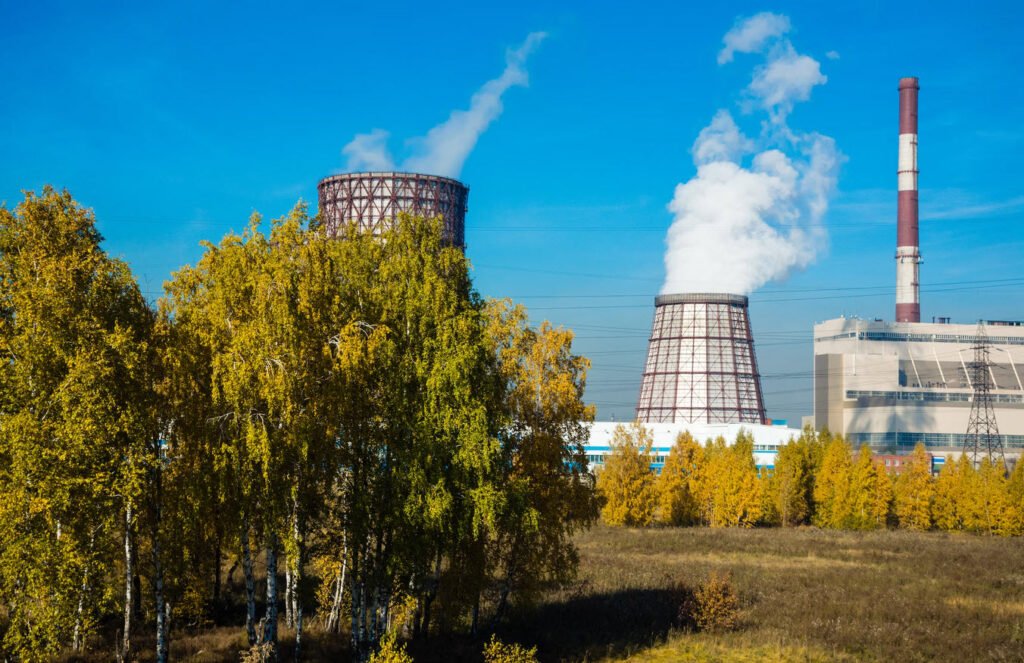
Thermal pollution is a significant environmental issue that often takes a back seat to more visible forms of pollution but can have far-reaching consequences on ecosystems and human health. It arises from the release of heated liquids or gases into natural water bodies or the atmosphere, causing a rise in temperature in these areas.
The main sources of thermal pollution include industrial processes, power generation, and nuclear facilities, and its impacts are felt both in aquatic environments and on the overall atmospheric temperature.
In this article, we will explore the causes, effects, and potential solutions to thermal pollution.
Causes of Thermal Pollution
Thermal pollution primarily results from the following sources:
- Industrial Effluents: Many industries use water for cooling purposes, which then gets discharged into nearby water bodies at elevated temperatures. This can significantly alter the temperature of the receiving water, making it harmful to aquatic life.
- Power Plants: Various types of power plants, such as coal-fired, nuclear, and hydroelectric facilities, release heated water or air into the environment. The excess heat, if not adequately managed, can affect the surrounding ecosystems.
- Nuclear Reactors: Nuclear power plants use large quantities of water for cooling, and the discharge of heated water can lead to thermal pollution.
Effects of Thermal Pollution
- Adverse Impact on Aquatic Ecosystems: The rise in water temperature negatively affects aquatic organisms like fish, aquatic plants, and microorganisms, as they are highly sensitive to temperature changes. Reduced dissolved oxygen levels in warmer water can lead to the suffocation of fish and other aquatic life.
- Altered Migration Patterns: Higher water temperatures can affect the migration patterns of aquatic species, disrupting their natural habitats and breeding cycles.
- Harm to Biodiversity: Thermal pollution can lead to a decrease in species diversity in affected water bodies, as some species may not be able to tolerate the changed temperature conditions.
- Reduced Water Quality: Increased water temperatures can also cause a decrease in water quality by promoting the growth of harmful algae and bacteria, leading to waterborne diseases.
Solutions to Thermal Pollution
- Improved Cooling Technologies: Industries and power plants can adopt more efficient cooling technologies to minimize the release of heated water or gases. Closed-loop cooling systems are a viable option that can significantly reduce thermal pollution.
- Thermal Regulations: Governments and environmental agencies can establish and enforce regulations to limit the temperature increase in water bodies, especially near industrial and power plant sites.
- Alternative Energy Sources: Transitioning to cleaner and more sustainable energy sources, such as wind, solar, and geothermal power, can help reduce the thermal impact associated with traditional power plants.
- Eco-Friendly Design: When constructing new facilities or retrofitting existing ones, incorporating eco-friendly design features can help minimize thermal pollution. This may include natural cooling methods and integrated cooling ponds.
Conclusion
Thermal pollution is a subtle yet significant form of pollution with the potential to disrupt aquatic ecosystems and impact human well-being by contributing to increased atmospheric temperatures. Understanding its causes and effects is crucial in addressing this issue.
By implementing improved cooling technologies, strict regulations, and transitioning to cleaner energy sources, we can take steps toward mitigating the impact of thermal pollution and ensuring a healthier, more sustainable environment for all.
You may also like:- Exploring the Enigmas of Science – Unraveling Celestial Mysteries and Physical Conundrums
- Semiconductor Related Terms – A Beginner’s Guide
- Major Trenches and Ridges Around the World
- [The Planets] Mercury to Neptune – Some Known Facts
- Unraveling Earth’s Mysteries – A Journey through Intriguing Questions
- The Principal Causes of Pollution – A Comprehensive Overview
- What is Noise Pollution?
- Why Are Bacteria and Microbes Afraid of UV Light?
- Soil Pollution – Causes, Effects, and Solutions
- Did You Know Elephants Don’t Get Cancer?







